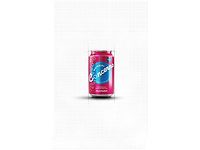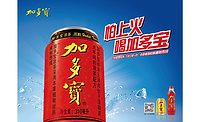Epoxies for Non Bisphenol-A Packaging Coatings

The initiative of ECHA to launch a public consultation on the proposal submitted by France to amend the current harmonized classification and labeling of Bisphenol-A (BPA) from reproductive toxicity category 2 (hazard statement code H361f) to reproductive toxicity Category 1B (hazard statement code H360F) has created a debate in the industry.
Although this consultation initiated by ECHA is primarily for Bisphenol-A classification and not epoxy or polycarbonate polymers, the outcome of this debate is critical in determining the fate of the food packaging industry in general and the quality of food packaging in particular in the coming years. Out of all stake holders, the maximum impact is going to be felt by the consumer at the end of the day.
For hygienic, environment friendly and sustainable solutions in the field of food packaging, it is important for the common man to understand some basic technical terminology to prevent any misconceptions.
In the context of the current debate on Bisphenol-A classification and its impact on polymers used in direct food contact applications, we need to see the value chain of Bisphenol-A and its criticality for producing best-in-class food packaging coatings.
The stakeholders who may be affected due to changes in harmonized classification and labeling of Bisphenol-A are:
- Bisphenol-A manufacturers;
- Polycarbonate polymer manufacturers (4.5 million metric tons annual global demand) and epoxy manufacturers (2.1 million metric tons annual global demand);
- Formulators and converters in the field of container coating/food packaging (5%-7% share of global polycarbonate and epoxy market;
- Packaging industry;
- Food product suppliers (small and big brands);
- End-use customers; and
- NGOs , GLP laboratories and political parties.
Current Issue
Bisphenol-A is one of many chemicals that may have the potential to interact with hormone systems in the body (a so-called endocrine active substance). It has been known since the 1930s that Bisphenol-A can mimic the female sex hormone, estrogen. The effects on fertility and reproduction and the endocrine (hormonal) system have been subject to various debates and research.
EFSA settled on a dose of 0.05 mg of Bisphenol-A per kilogram of body weight per day (kg/bw/day), below which there were no observable adverse effects. This figure was derived based on two studies.1, 2, 3 On precautionary principle, it reduced that limit by a factor of 100, resulting in a tolerable daily intake level of 50 micrograms kg/bw/day. This level and these studies remain a benchmark in the worldwide regulation of Bisphenol-A.
Role of Epoxy-Based Coatings
Epoxy polymers in food packaging are synonymous with high performance, in terms of maintaining the integrity of cans from effects of food, and protecting the food from the steel and aluminum of the cans.
The epoxy coatings have the high heat stability required to pass retort tests during sterilization; high mechanical strength to tolerate conditions of stamping, providing good adhesion to metal surfaces; and high chemical resistance required to withstand a wide range of acidic and basic conditions inherent of food products.
Epoxy coatings in metal cans ensure food safety and eliminate the dangers of food poisoning from microbial contaminants, such as E. coli. Bisphenol-A-based epoxy resin coatings are essential to avoid spoilage of food products stored or distributed in metal packaging. Epoxy-resin coatings in metal food and beverage packaging are versatile and effective for the broad range of canned products. Epoxy-coated metal cans in fact reduce the potential for serious illness, protecting children and adults.4,5,6
This combination of metal cans and epoxy coatings imparts best shelf life and truly signifies the concept of packaging (pack+aging).
Misconceptions
Articles and misrepresentations by many non technical bodies have created confusion in the minds of end customers that since Bisphenol-A is toxic, all Bisphenol-A-based epoxy coatings are also toxic. If we go by this corollary, all polyurethanes based on isocyanate raw materials will also become toxic, but this is not true.
The epoxy resins designed for food packaging are special resins containing extremely low levels of free Bisphenol-A than the recommended threshold level of maximum daily intake set by the European food safety authority.
Reality Check
A. Bisphenol-A is used as one of the raw materials for making Bisphenol-A-based epoxy polymers. During the process of manufacturing, the Bisphenol-A molecule loses its identity as free Bisphenol-A and become part of a polymer matrix. At the resin stage the free contents range from 10 parts per million to below detection levels.
The epoxy resin devoid of any free Bisphenol-A is mixed with solvents, hardener and additives (non Bisphenol-A based) to formulate a coating, which after cure, forms a very thin film (10-12 grams per square meter thickness in dry form) of cured epoxy inside the cans.
Therefore in reality we need to check the levels of free Bisphenol-A vis-a-vis threshold limit (50 micrograms/ kg body weight/day)set by EFSA and similar bodies. The actual exposure to any human body is practically much lower than the daily permissible range fixed by EFSA.
We at Aditya Birla Chemicals use analytical tools like HPLC, LCMS and the most stringent test protocols to ensure sub ppm levels of free Bisphenol-A in the resin manufacturing process and during quality assurance process. Free Bisphenol-A as explained above is much lower than the threshold level in the can coatings based on our products.
These resins are further blended with hardeners or curing agents that are Bisphenol-A free during coating on metal cans. This further reduces the free Bisphenol-A levels to sub ppb (parts per billion) to ppt levels (parts / trillion levels) in the cured resin film.
B. Current French law focuses on and says “Manufacture, import, export and placing on the market free of charge or for a fee of any packaging, container or utensil containing bisphenol A and intended to come into direct contact with food are suspended…» as of 1 January 2013 and as of 1 January 2015.”
C. Going by the above French law “containing Bisphenol A” is considered as “intentionally added Bisphenol-A”, but the current can coatings based on epoxy resins don’t contain intentionally added Bisphenol-A.
D. It will be good for converters, coaters and customers to seek clarification from regulatory bodies on the permissible limit according to the concept of “non-intended contamination”. This is yet to be fixed for free Bisphenol-A in “ready-to-use coated metal cans on direct food contact side,” as this is yet not clear to even many technically qualified convertors.
E. Batch to batch testing of free Bisphenol-A content at ppb and ppt level requires sophisticated analytical tools like HPLC (high-performance liquid chromatography) or LCMS (liquid chromatography mass spectrometry), a clean room environment to avoid cross contamination, skilled analyst or technicians and costly analytical reagents . Aditya Birla Chemicals has such specialized analytical tools, techniques and trained manpower.
However, there is a need to do the reality check on how well equipped laboratories of coating formulators, convertors, end consumers and the local government and non-government certifying laboratories are, by the regulatory bodies, as they have the authority to enforce rules for testing such low levels of free Bisphenol-A in the packaging material, pre-formulation and post-cure performance of the coating.
The regulatory bodies now have to present a suitable test method to determine free levels of Bisphenol-A and any other material that may migrate to all involved parties in the value chain to ensure safe handling and usage of any coating for direct and indirect food contact.
F. Use of Bisphenol-A in polycarbonate and epoxy resins dates back more than 50 years. Understanding toxicological effects of Bisphenol-A on endocrine disruption, for low dose effect, is still inconclusive. If these time-tested resins are not right, than what are the alternatives available and what possible health concern do they pose? Further tests are necessary before any conclusion can be drawn.
G. Impact of regulatory requirements like REACH on new products in meeting timelines is yet to be seen, especially by non EU manufacturers.
Conclusion
We at Aditya Birla Chemicals are geared up to meet the challenges, having invested in research and development, along with enhancing analytical capabilities. We share the concerns of our customers, society, NGOs and various government bodies for finding solutions for a sustainable future.
We are working closely with our customers to conduct product performance trials of Bisphenol-A-free epoxy alternates in can coatings. The free Bisphenol-A contents in these epoxy resins are below detection limits at the resin stage itself.
Converters and formulators are tuned to using certain standard solvents in formulations of current epoxy resins. The reluctance to change the solvents in already standardized formulations and maintaining separate inventory of solvents to accommodate new formulation needs to be addressed jointly for mutual growth.
The challenges to the maintain taste and odor of packed products, ensuring compatibility of the vast range of food products with coatings and customer expectations to get a drop-in material without affecting high speed lines impact the pace of success.
References
1. http://www.efsa.europa.eu/en/topics/topic/bisphenol.htm
2. Tyl RW, Myers CB, Marr MC, Sloan CS, Castillo NP, Veselica MM, Seely JC, Dimond SS, Van Miller JP, Shiotsuka RN, Beyer D, Hentges SG, Waechter JM, Jr. (2008) Two-generation reproductive toxicity study of dietary bisphenol A (Bisphenol A) in CD-1(R) (Swiss) mice. Toxicol Sci. 104:362 – 384.
3. Tyl R, Myers CB, Marr MC. Abbreviated one-generation study of dietary bisphenol A (Bisphenol A) in CD-1® (Swiss) mice (2002a). In. Research Triangle Park, NC: RTI (sponsored by the Society of the Plastics Industry, Inc.).
4. http://www.drinknwaterplus.com/documents/BPA%20fact%20book%20charts%20I%20update%20July%2005%201.pdf
5. Teeguarden, J.G., Hanson-Drury, S., A Systematic Review of Bisphenol A “Low Dose” Studies in the context of Human Exposure: A case for Establishing Standards for Reporting “Low-Dose”
Effects of Chemicals, Food and Chemical Toxicology (2013), doi: http://dx.doi.org/10.1016/j.fct.2013.07.007
6. Melody M. Bomgardner, (Feb 11, 2013) “no clear winner in race to find Non-BPA can linings,C&EN, Vol 91 ( 6),pp25-25
For further information and to contact us, visit www.epotec.info.
Looking for a reprint of this article?
From high-res PDFs to custom plaques, order your copy today!








